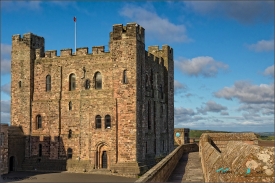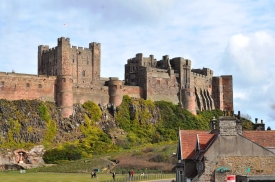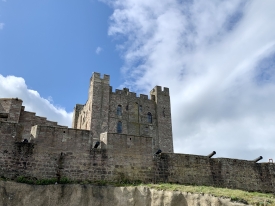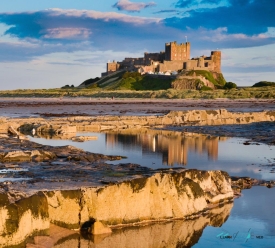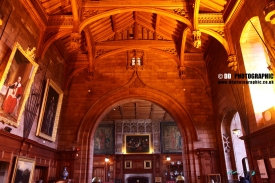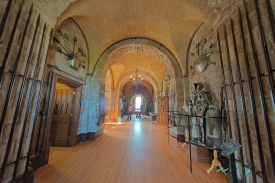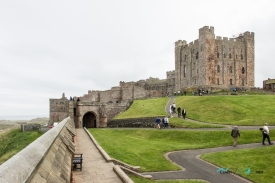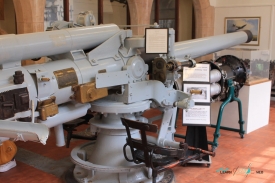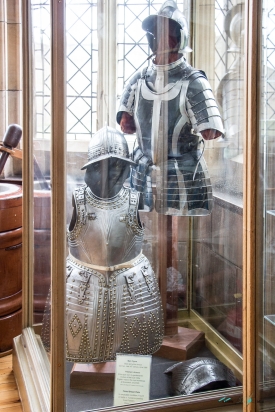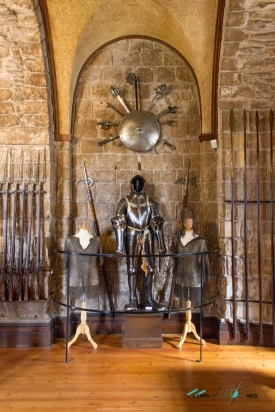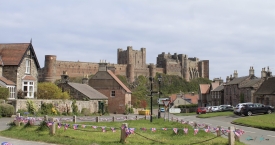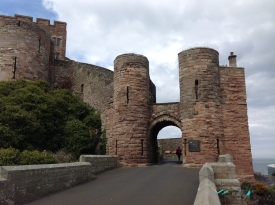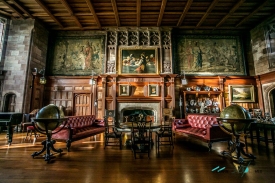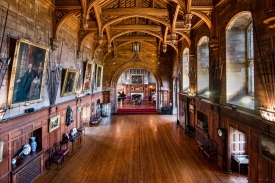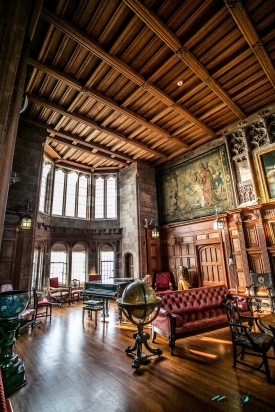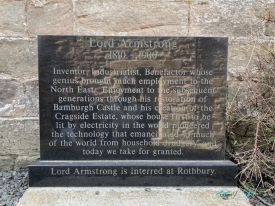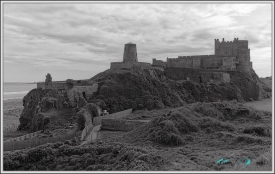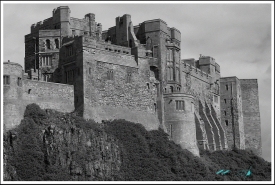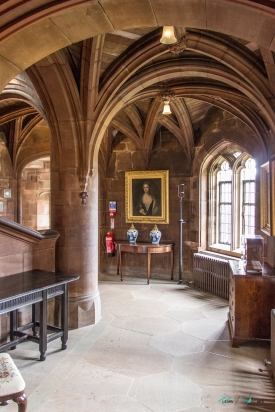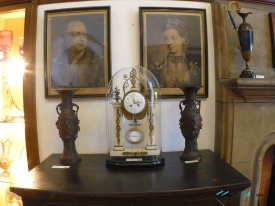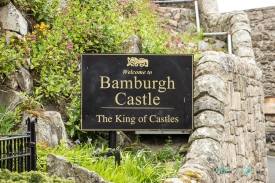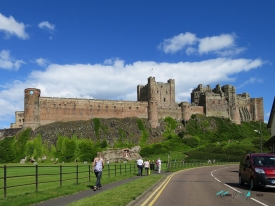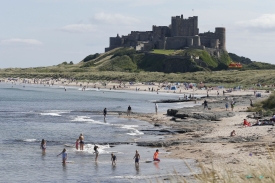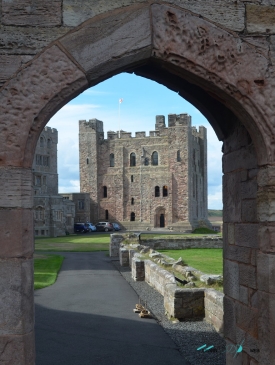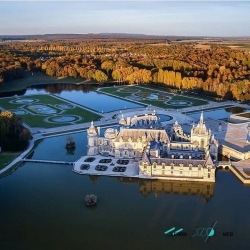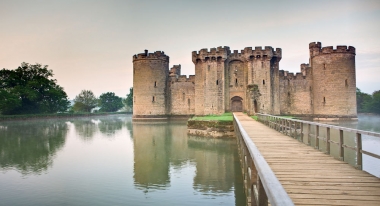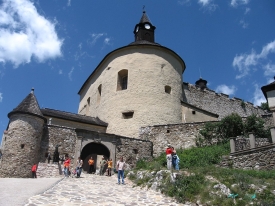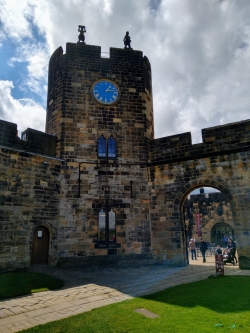ABOUT Bamburgh Castle
Nestled along the picturesque Northumberland coastline in England, Bamburgh Castle stands as a testament to the region's rich history and architectural prowess. This magnificent fortress, with its dramatic sea-facing cliffs and sprawling green landscape, offers visitors a chance to immerse themselves in a world of enchanting stories and captivating secrets.
Following the Siege of Acre in 1191, and as a reward for his service, King Richard I appointed Sir John Forster the first Governor of Bamburgh Castle. Following the defeat of the Scots at the Battle of Neville's Cross in 1346, King David II was held prisoner at Bamburgh Castle.
Throughout the centuries, the castle has changed hands multiple times. Following de Mowbray's rebellion against King William II in 1095, the castle was seized by the Crown. Later, it was passed on to various noble families, including the Forsters, who held ownership for over 400 years.
In the 18th century, the castle fell into disrepair, and it wasn't until the 19th century that it was purchased by Lord Armstrong, a prominent industrialist. Armstrong embarked on an ambitious restoration project, reviving the castle to its former glory. He enlisted the help of architect John Dobson to redesign the State Rooms in a Victorian Gothic style, adding a touch of grandeur to the castle's interiors.
Bamburgh Castle is currently owned by the Armstrong family, who remain dedicated to preserving its history and architectural splendor. The castle is open to the public, offering guided tours of its impressive State Rooms, vast armory, and stunning coastal views. The castle also hosts various events throughout the year, including historical reenactments and educational workshops, further enriching visitors' experience of this remarkable fortress.
The history of Bamburgh Castle is a tale of conquest, rebellion, and restoration. From its prehistoric origins to its modern-day status as a symbol of Northumberland's past, the castle has withstood the test of time, leaving an indelible mark on England's history. As you walk through the halls of this magnificent fortress, you'll be transported back through the centuries, bearing witness to the events and people that have shaped its destiny.
In recent years, archaeological excavations at Bamburgh Castle have uncovered even more of its rich history. The Bamburgh Research Project, an ongoing initiative, aims to learn more about the castle's past and the people who lived there. These excavations have unearthed numerous artifacts, including Anglo-Saxon metalwork and evidence of a royal burial site, believed to be connected to the 7th-century King Oswald of Northumbria.
When you visit Bamburgh Castle, you'll be immersed in a world of fascinating stories, breathtaking architecture, and unforgettable experiences. As the castle continues to reveal its secrets and captivate new generations, its legacy will endure as a symbol of Northumberland's rich and varied history.
Take the time to explore Bamburgh Castle and the surrounding village on your next trip to Northumberland, England. Whether you're a history enthusiast, an architecture admirer, or simply seeking an unforgettable experience, Bamburgh Castle offers something for everyone. Embrace the opportunity to travel back in time and immerse yourself in the captivating tales and timeless beauty of this remarkable fortress.
Early History
Long before Bamburgh Castle was built, the site was inhabited by Celtic Britons. Archaeological evidence suggests that the rocky outcrop has been occupied since the Iron Age, around 800 B.C. The first recorded mention of a fortress at Bamburgh dates back to 547 AD when it was known as Din Guyardi. During this time, the castle served as the royal seat of the native Britons and later became the capital of the Anglo-Saxon kingdom of Bernicia.Construction and Ownership
The construction of the current Bamburgh Castle began under the Normans in the 11th century. After the Norman Conquest of England in 1066, William the Conqueror granted the castle to Robert de Mowbray, Earl of Northumbria. However, it wasn't until King Henry II's reign in the 12th century that the castle underwent significant renovations and expansion, transforming it into the mighty fortress we know today. Henry II probably built the keep as it was complete by 1164.Following the Siege of Acre in 1191, and as a reward for his service, King Richard I appointed Sir John Forster the first Governor of Bamburgh Castle. Following the defeat of the Scots at the Battle of Neville's Cross in 1346, King David II was held prisoner at Bamburgh Castle.
Throughout the centuries, the castle has changed hands multiple times. Following de Mowbray's rebellion against King William II in 1095, the castle was seized by the Crown. Later, it was passed on to various noble families, including the Forsters, who held ownership for over 400 years.
Key Events and Historical Significance
Bamburgh Castle has been the backdrop for several notable events in British history. In 1464, during the Wars of the Roses, it became the first English castle to fall to artillery fire, as the Yorkist forces successfully besieged the Lancastrian garrison.In the 18th century, the castle fell into disrepair, and it wasn't until the 19th century that it was purchased by Lord Armstrong, a prominent industrialist. Armstrong embarked on an ambitious restoration project, reviving the castle to its former glory. He enlisted the help of architect John Dobson to redesign the State Rooms in a Victorian Gothic style, adding a touch of grandeur to the castle's interiors.
Bamburgh Castle is currently owned by the Armstrong family, who remain dedicated to preserving its history and architectural splendor. The castle is open to the public, offering guided tours of its impressive State Rooms, vast armory, and stunning coastal views. The castle also hosts various events throughout the year, including historical reenactments and educational workshops, further enriching visitors' experience of this remarkable fortress.
The history of Bamburgh Castle is a tale of conquest, rebellion, and restoration. From its prehistoric origins to its modern-day status as a symbol of Northumberland's past, the castle has withstood the test of time, leaving an indelible mark on England's history. As you walk through the halls of this magnificent fortress, you'll be transported back through the centuries, bearing witness to the events and people that have shaped its destiny.
In recent years, archaeological excavations at Bamburgh Castle have uncovered even more of its rich history. The Bamburgh Research Project, an ongoing initiative, aims to learn more about the castle's past and the people who lived there. These excavations have unearthed numerous artifacts, including Anglo-Saxon metalwork and evidence of a royal burial site, believed to be connected to the 7th-century King Oswald of Northumbria.
When you visit Bamburgh Castle, you'll be immersed in a world of fascinating stories, breathtaking architecture, and unforgettable experiences. As the castle continues to reveal its secrets and captivate new generations, its legacy will endure as a symbol of Northumberland's rich and varied history.
Take the time to explore Bamburgh Castle and the surrounding village on your next trip to Northumberland, England. Whether you're a history enthusiast, an architecture admirer, or simply seeking an unforgettable experience, Bamburgh Castle offers something for everyone. Embrace the opportunity to travel back in time and immerse yourself in the captivating tales and timeless beauty of this remarkable fortress.
The Best Pictures of Bamburgh Castle
Videos of Bamburgh Castle






![[癒しの音楽]イギリス・バンバラ城に行って来ました。](https://i1.ytimg.com/vi/OE_PEZkSC-k/mqdefault.jpg)




